The Battle of Hickory Point
Tour Stop
Directions: The Battle of Hickory Point Historical Marker [ Waypoint = N39 18.203 W95 18.648 ] is located in a roadside turnout at the intersection of US Highway 59 and Hickory Point Road, about 5 miles north of Oskaloosa, Kansas 66066.
- From Lecompton, head east on N 2100th Road / County Road 023.
- After 0.1 miles, turn left (north) onto County Road 1029.
- After 2.5 miles, turn right (east) onto US Highway 24.
- After 2.8 miles, turn left (north) onto US Highway 59.
- After about 17.2 miles, you will reach the intersection with Hickory Point Road (you will pass through Oskaloosa on your way). The marker will be in a roadside turnout at the southeastern side of the intersection.
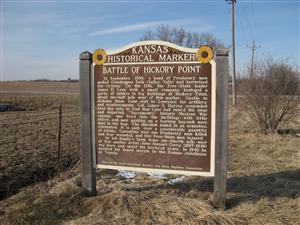
“In September, 1856, a band of Proslavery men sacked Grasshopper Falls (Valley Falls) and terrorized the vicinity. On the 13th, the Free-State leader James H. Lane with a small company besieged a party of raiders in log buildings at Hickory Point, about one-half mile west of this marker. Unable to dislodge them, Lane sent to Lawrence for artillery and reinforcements. Col. James A. Harvey responded next day only to find that Lane had raised the siege and departed. "Sacramento," historic Mexican War cannon, was fired into the buildings with little effect, and men pushing up a burning hayrack were shot in the legs. The skirmish ended in an armistice, celebrated, it is said, over a considerable quantity of whisky. Casualties were one Proslavery man killed and four wounded, and five Free-State men injured."
"At his family's farm home one-fourth mile west of this marker artist John Steuart Curry (1897-1946) was born and spent his boyhood years. In 1940 he painted his famed murals in the Kansas statehouse at Topeka. ”
“Erected by the State Historical Society and the State Highway Commission”
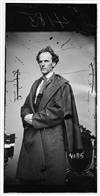 About a half mile or so west of where you are standing, James H. Lane led a band of free-state militia against a fortified position held by pro-slavery militia at Hickory Point a few miles north of present day Oskaloosa, Kansas.
About a half mile or so west of where you are standing, James H. Lane led a band of free-state militia against a fortified position held by pro-slavery militia at Hickory Point a few miles north of present day Oskaloosa, Kansas.
Hickory Point was a pro-slavery town that had been established in 1855 by settlers from Missouri. To guard against attacks from free-state men, the settlers in Hickory Point had built extra sturdy log cabins.
In December of 1855, free-state voters had passed the Topeka Constitution and led to free-state leaders to seat a territorial legislature in direct opposition to the pro-slavery legislature in Lecompton. Both sides issued calls for the formation of militia, which resulted in a sharp escalation in the violence in Kansas in 1856. In May, a pro-slavery militia had sacked Lawrence, Kansas. Then less than a month later saw the Pottawatomie Massacre and the Battle of Black Jack.
Jefferson County, Kansas was located only about 20 miles from the Missouri border and had been settled by both free-state supporters and pro-slavery supporters. In the summer of 1856 the county saw regular violence occurring between pro-slavery towns and free-state towns. Then, in September, pro-slavery militia attacked and ransacked the free-state town of Grasshopper Falls (present day Valley Falls).
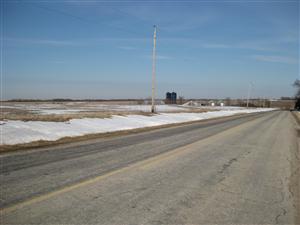
“Take this dirty paper back to [Lane], and tell him we will fight him and all the hireling cutthroats and assassins he can bring against us.”
Lane decided not to assault the fortified positions, but rather fired on the log cabins using his company's Sharps rifles. The defenders returned fire from their positions. The firing had little effect for either side. According to Reader
“The rangers had now ceased firing altogether. They were either sparing of their ammunition or took this course to challenge us to advance. On our side we were wasting good powder and lead against the log walls that concealed our foe. Our own fire soon slackened and then died out completely. It was a regular deadlock; what next?”
Lane decided to send word back to Lawrence for reinforcements and artillery to use against the defenders' fortified positions. The free-state militia pulled back to Osawkie from Hickory Point and waited for the reinforcements.
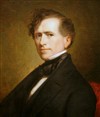
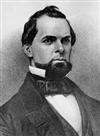
In the meantime, President Franklin Pierce had appointed John W. Geary to be the new territorial governor of Kansas. Geary arrived in Kansas on September 9, 1856. Geary immediately issued an order that all Kansas militia should be disbanded. He also brought additional US Army troops into the state in order to maintain the peace in Kansas. While waiting for reinforcements, Lane received word of Geary's order to disband all militia forces. According to Reader
“Lane immediately sent a messenger to Colonel Harvey at Lawrence, countermanding the order for a field gun and reinforcements; sent the infantry back to Topeka, and started himself for Nebraska with the mounted men the same night. We were in the wagons ready to start about eight or nine o'clock in the evening.”
Lane's messenger never reached Colonel James A. Harvey, who was leading the reinforcements (about 125 men) and an artillery piece called “Old Sacramento” up towards Hickory Point by way of Oskaloosa. Harvey arrived at Hickory Point on the morning of September 14th. Harvey soon used the artillery piece to open fire on the log cabins. After firing some 20 cannon shots at the cabins, resulting in only one fatality, Charles Newhall, over a period of six hours, the pro-slavery defenders surrendered to the free-state militia. As part of the surrender, all non-residents agreed to leave the area. Having accomplished what he had set out to do, Harvey and his militia set out to return to Lawrence. Along the way they met and were captured by a company of US Dragoons that had been sent by Governor Geary.
Samuel J. Reader was 19 years old when he emigrated to Kansas in 1855. Reader kept a diary and wrote many letters while in Kansas. He participated in the Battle of Hickory Point and, working from his diary, had this to say about its result:
“As a private soldier I knew nothing of the plans and motives of our leaders. They were brave men and may have been able, but they certainly proved to be unfortunate. General Lane's friends called him a clear-headed, heroic champion of our cause; his enemies the reverse. He was and still is, a puzzle. Perhaps there was no one who came in personal contact with him who was not swayed more or less by his subtle influence. Some of that influence lingers with me still, and there is a secret pleasure in the knowledge that I was one of "Jim Lane's boys."
But to a cool, dispassionate judgment this Hickory Point affair yields him little credit. It was a series of abortive attempts culminating in an unfortunate blunder that left Colonel Harvey to fight and suffer defeat alone. On the other hand, had Lane disregarded Governor Geary's request and gained a victory at Hickory Point, would our cause have been advanced? The nation was seething, and a successful battle might have acted like a spark to a powder magazine, and precipitated our Civil War four years too soon. Most likely all was ordered for the best. For it was ballots and not bullets that finally freed Kansas from the threatened curse of African slavery.”
